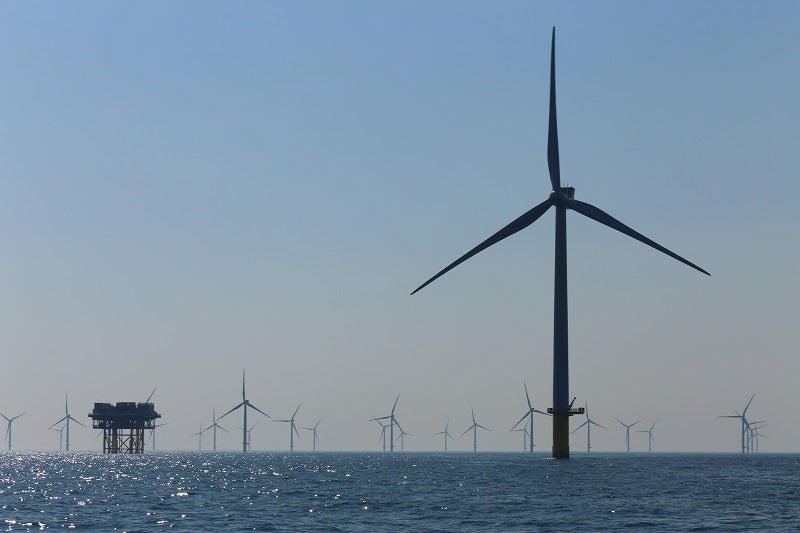The European offshore wind industry has witnessed strong growth in 2019 with the industry clocking the highest annual installations to date.
The region witnessed net commissioning of 3,623 megawatts (MW) of offshore wind farms during the year thereby bringing the cumulative installations of the region to 22,072MW. The gross annual installation for the year was 3,627MW, with the UK recording 4MW of decommissioning. The region witnessed ten new offshore wind farms getting connected to the grid and becoming commercially operational.
More than two-thirds of the installation came from the UK and Germany. The UK recorded annual installations of 1,764MW followed by Germany with 1,111MW. The other countries which connected offshore wind farms to the grid were Denmark, Belgium and Portugal.
 Figure 1: Gross annual offshore wind capacity, Europe, MW, 2019. Credit: GlobalData.
Figure 1: Gross annual offshore wind capacity, Europe, MW, 2019. Credit: GlobalData.
The decade has witnessed significant growth in the average turbine size. At the beginning of the decade, the average turbine size getting installed at an offshore wind farm was around 3MW. By the end of the decade, this was 7.8MW. Continuous engineering and the aim to harness the offshore potential are making turbine manufacturers increase the turbine size. The largest turbine that was connected in 2019 was MHI Vestas’ V164-8.4 MW.
The sector is moving deeper. The average water depth of offshore wind farms under construction in 2019 was 33m against 30m in 2018. Deeper waters are giving rise to floating offshore wind farms. Europe which has the largest floating wind fleet is seeing many demonstration projects on different floating concepts with the objective to reduce cost and upscale them to commercial purpose. Once projects like DemoSATH, TetraSpar etc. are available for commercial purpose the floating offshore fleet will see a jump in the installations from 45MW which was recorded at the end of 2019.

US Tariffs are shifting - will you react or anticipate?
Don’t let policy changes catch you off guard. Stay proactive with real-time data and expert analysis.
By GlobalDataThe offshore wind costs continue to fall significantly. According to GlobalData, France which is a new entrant in the offshore wind industry reported an average project cost for an offshore wind farm $11,000/kW in 2017, which in 2019, is estimated to be around $5,742/kW.
Similarly, the Netherlands also witnessed a fall in the average project cost. These countries conducted auctions for offshore wind farms which delivered prices for consumers in the range of €40-50/MWh which is cheaper than building new gas, coal or nuclear power plants.
Offshore wind is important for Europe if it is targeting the Green Deal. The region targets to become the world’s first carbon-neutral continent by 2050 for which investments in green technologies are required. The region targets an offshore wind capacity between 400 gigawatts (GW) and 450GW by 2050.
The reduction in average project cost and with countries having dedicated auctions for offshore wind farms in the pipeline, the sector will attract investments. All the EU members will have to check and make offshore wind friendly policies to attract investments thereby target to become carbon neutral and achieve the target set under Green Deal.





